Deconstruction / Reconstruction is a thesis that attempts to relook at architecture through the lens of structural optimization and digital fabrication. Reacting to the zeitgeist of the Fourth Industrial Revolution, where the digital becomes material, and Carpo’s “Second Digital Turn”, where design is used to inject intelligence – the thesis deconstructs architectural elements, applying breakthrough structural optimization methods to the process of their design. Through a study of Topology Optimisation, Evolutionary Structural Optimisation (ESO), Graphic Statics, and Stress Line Analysis with reference to recent work by Block, Akbarzadeh, Xie, among others – the thesis studies how current design processes could be augmented with these structural toolkits and fabricated using digital fabrication methods such as 3D printing with the aim of reducing the materials utilized in construction.
Ultimately, the thesis generates a new kit of parts from which architecture can be constructed and attempts to envision possible uses of these processes in four applications: A self-replicating ramp-up factory designed with topology optimization, a large span gallery designed using 3D graphic statics, a high speed rail terminus designed with stress line analysis, and a parasitic house which adapts to surrounding strucutral systems, designed using self-referencing evolutionary structural optimization.
A Rep-Rap Factory (Bi-Directional Evolutionary Structural Optimisation)
A Polyhedral Gallery (3D Graphic Statics)
High Speed Rail (Stress Line Optimisation)
A Parasitic House ( Macro to Micro BESO )
Possible construction methods for complex geometries (L to R)
Rod and Node, Split Nozzle Printing, Shotcrete, Cast in Situ Mould

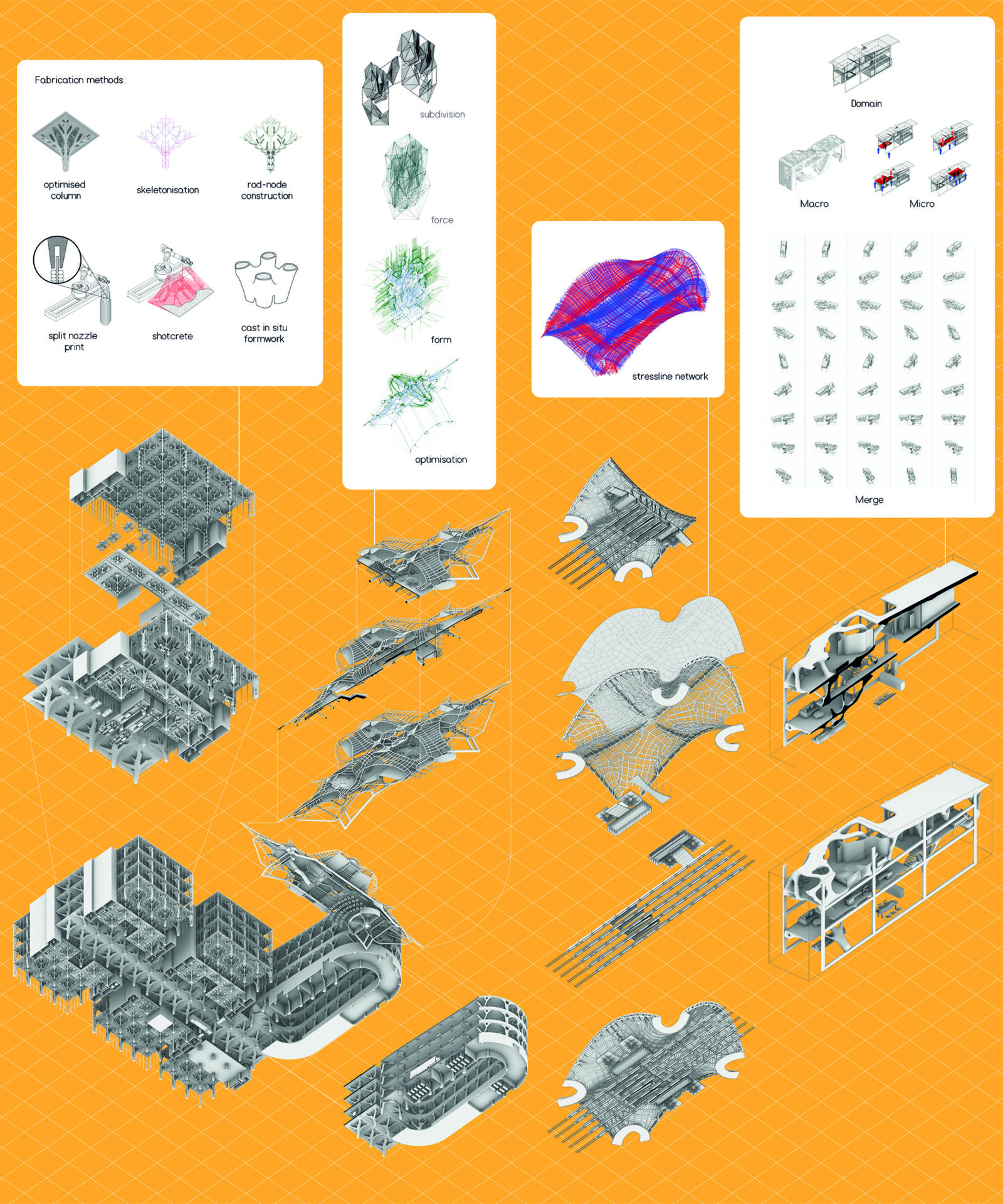
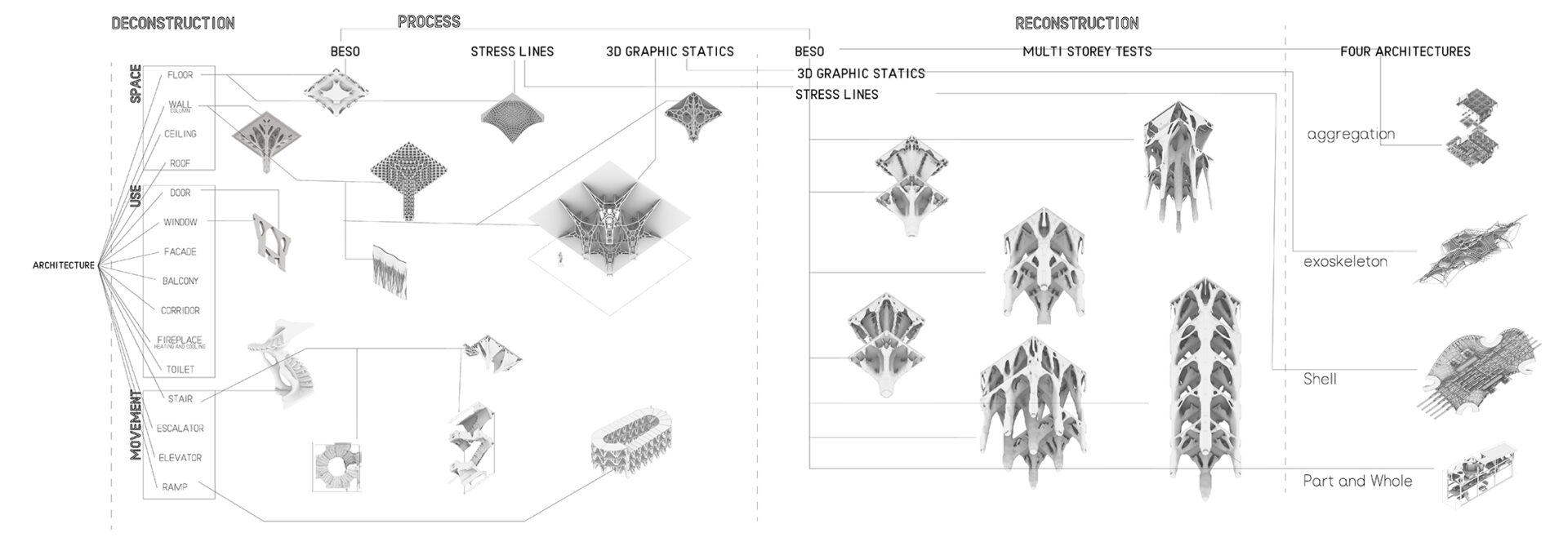
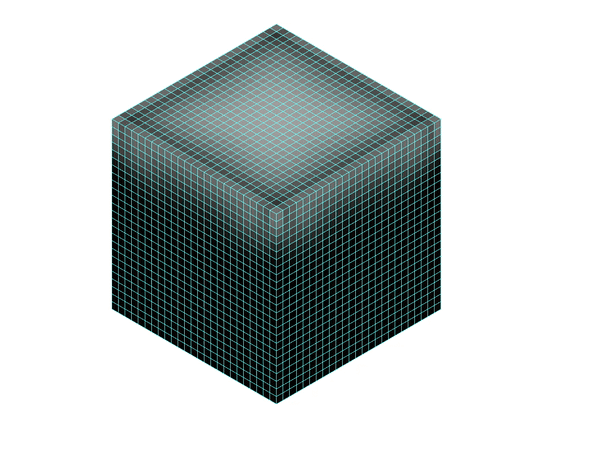
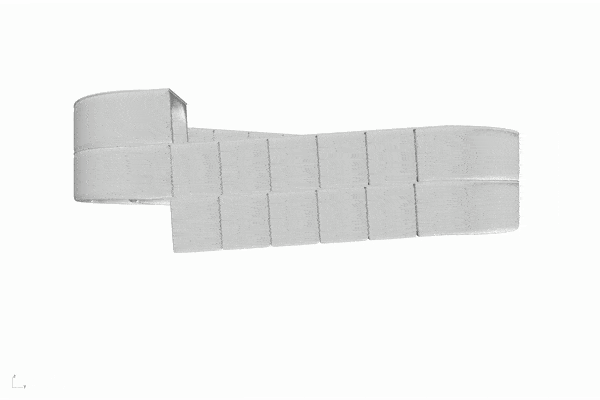

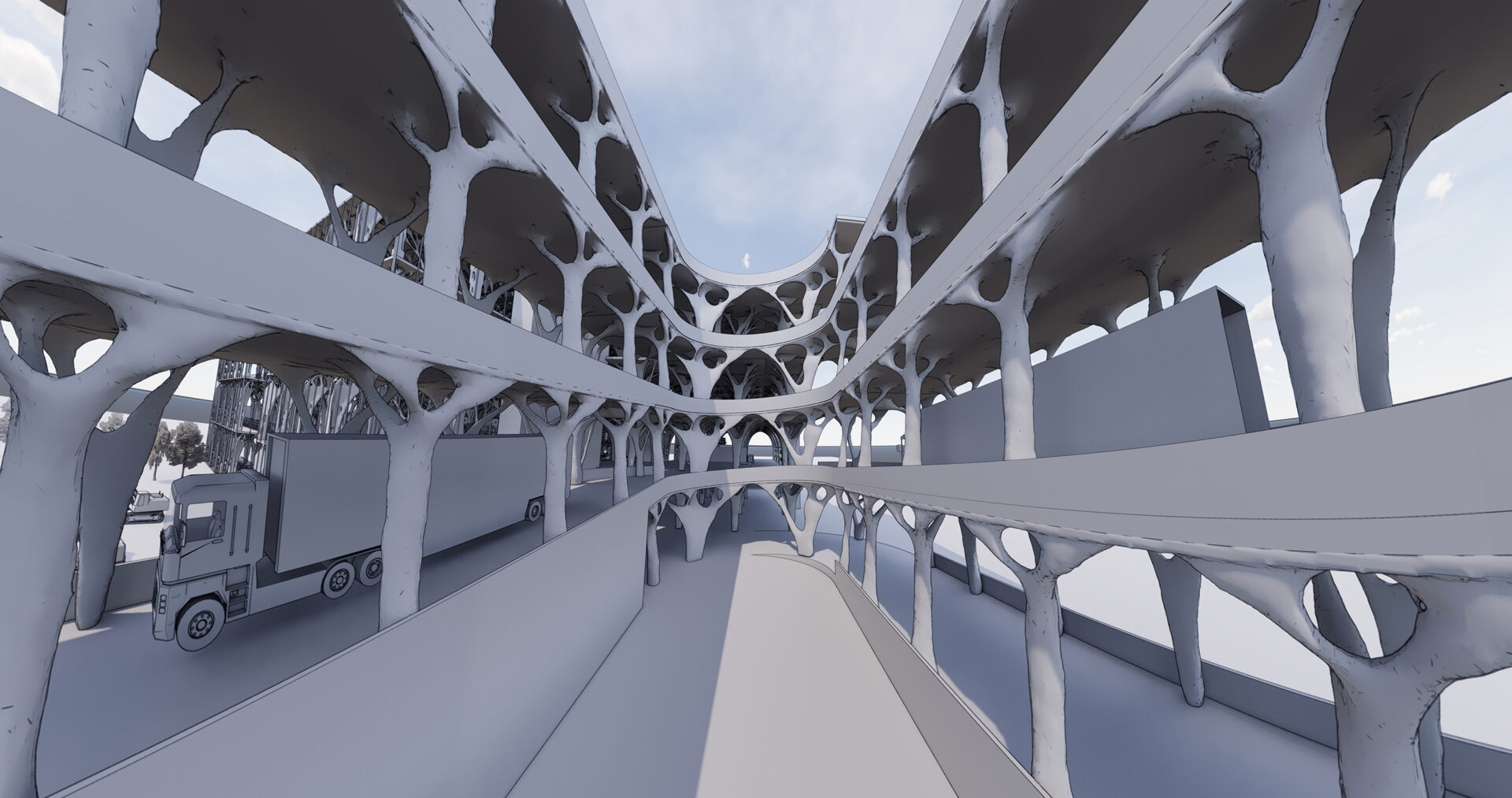
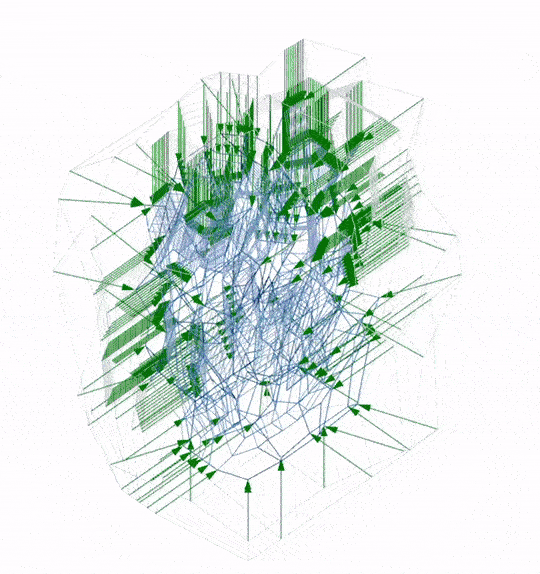
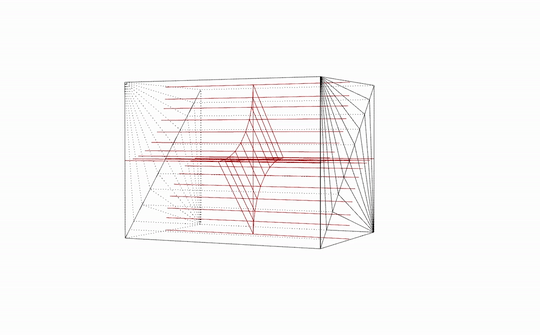
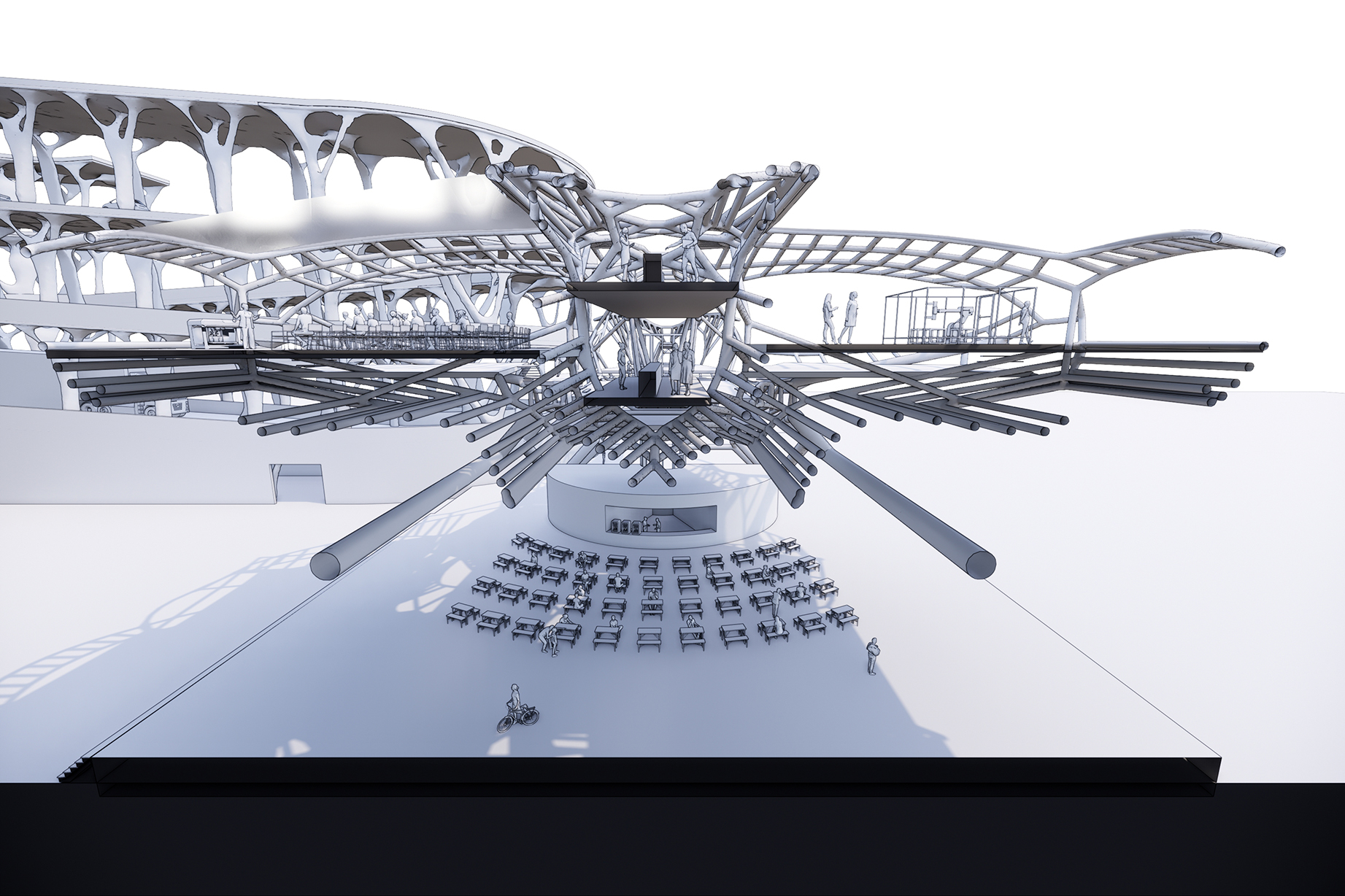
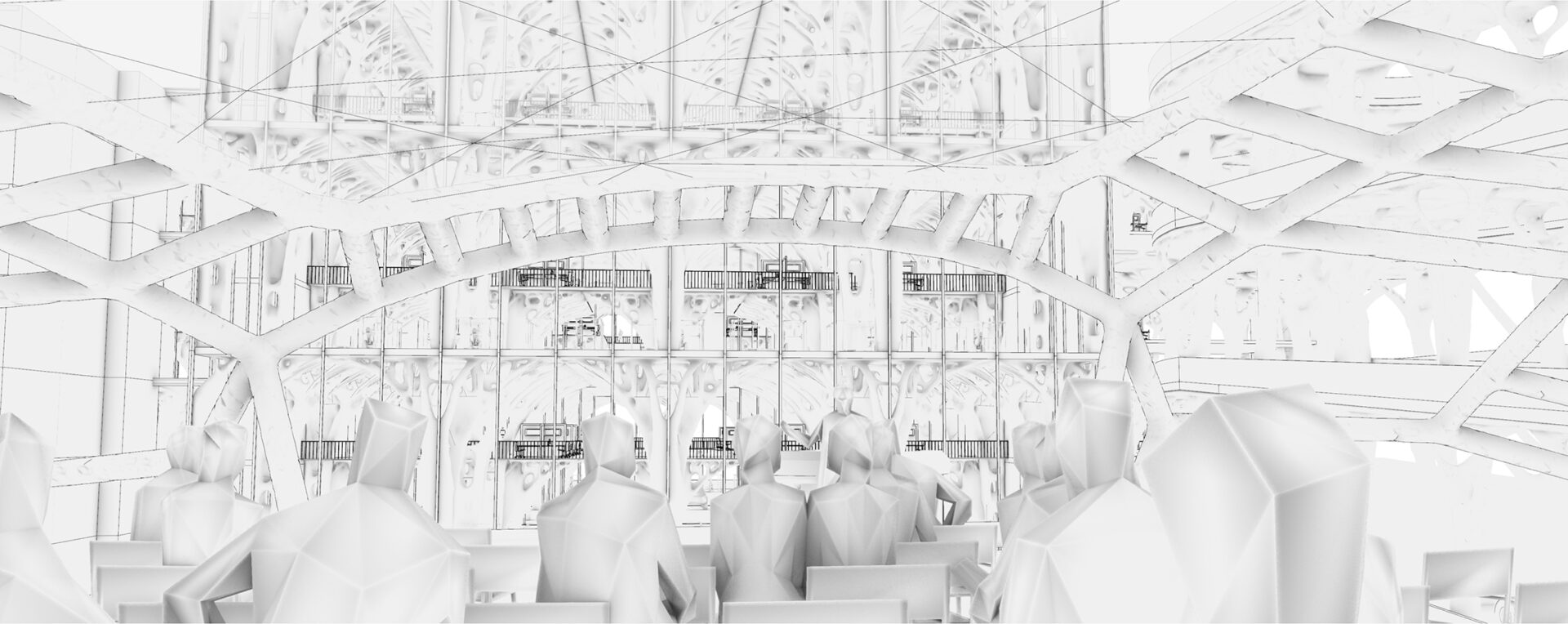
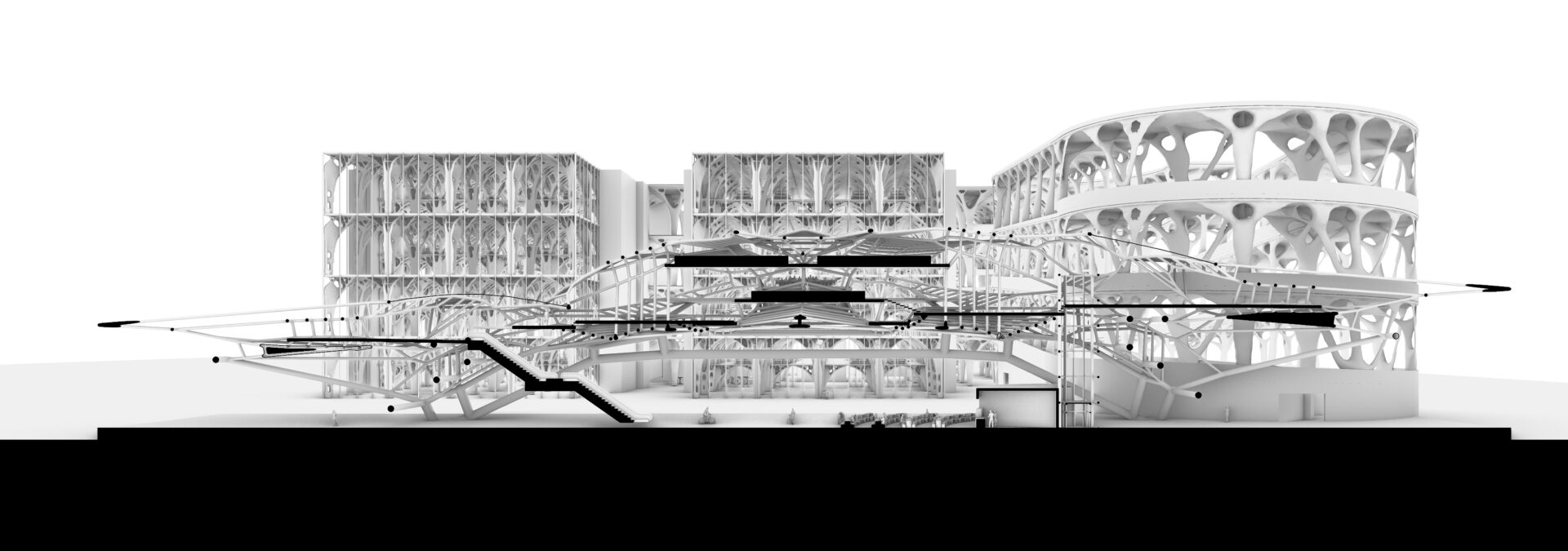
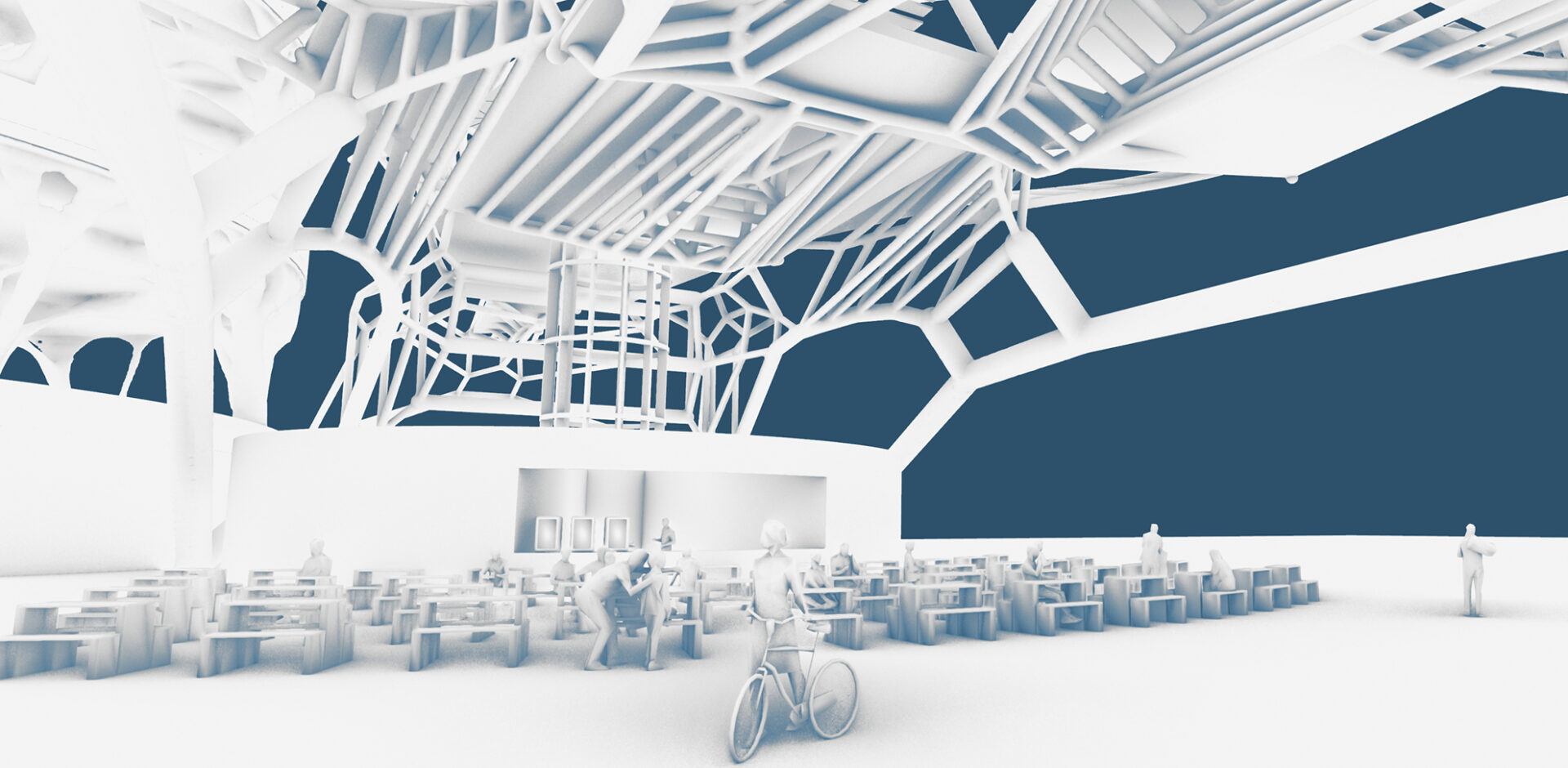
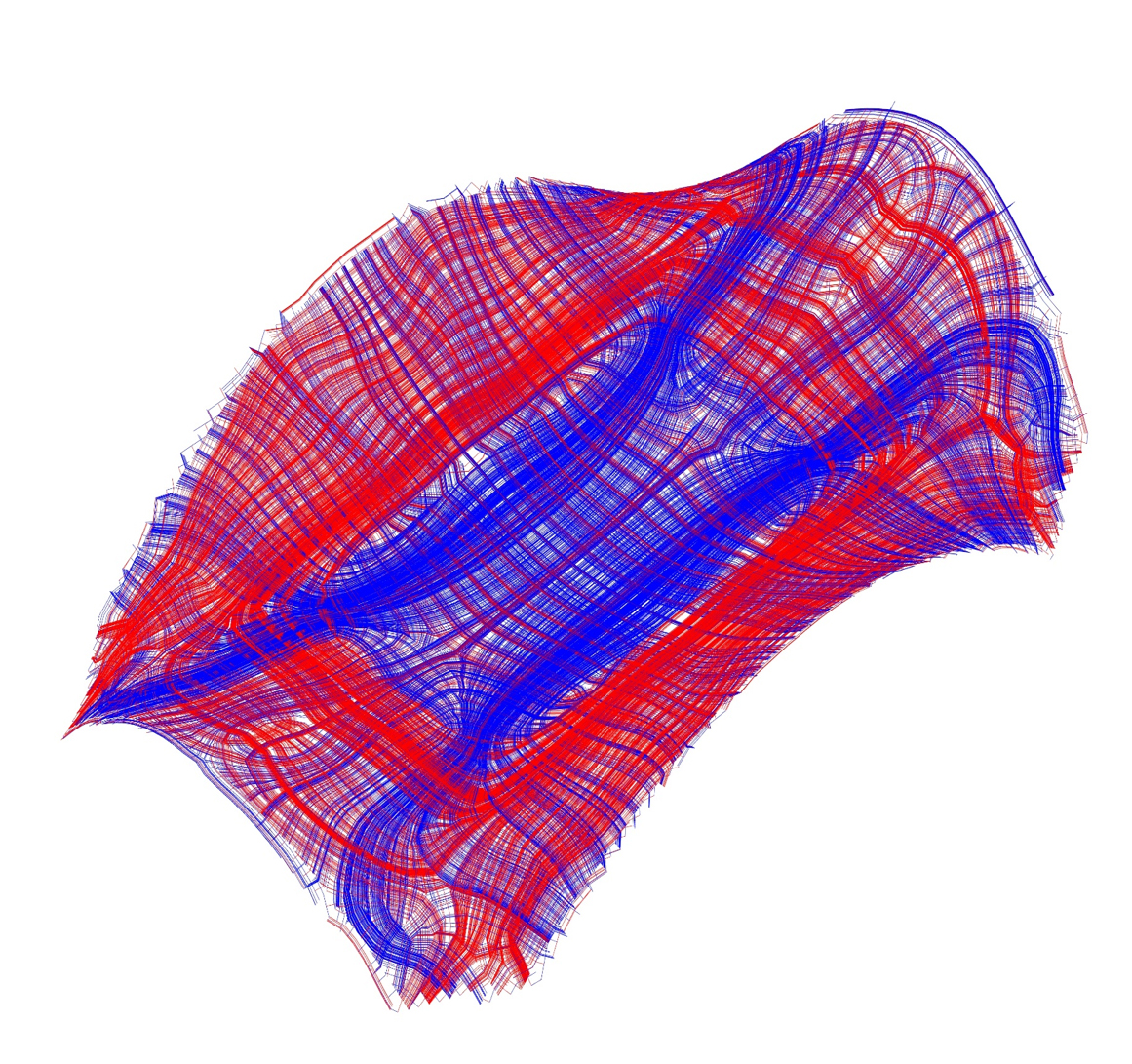
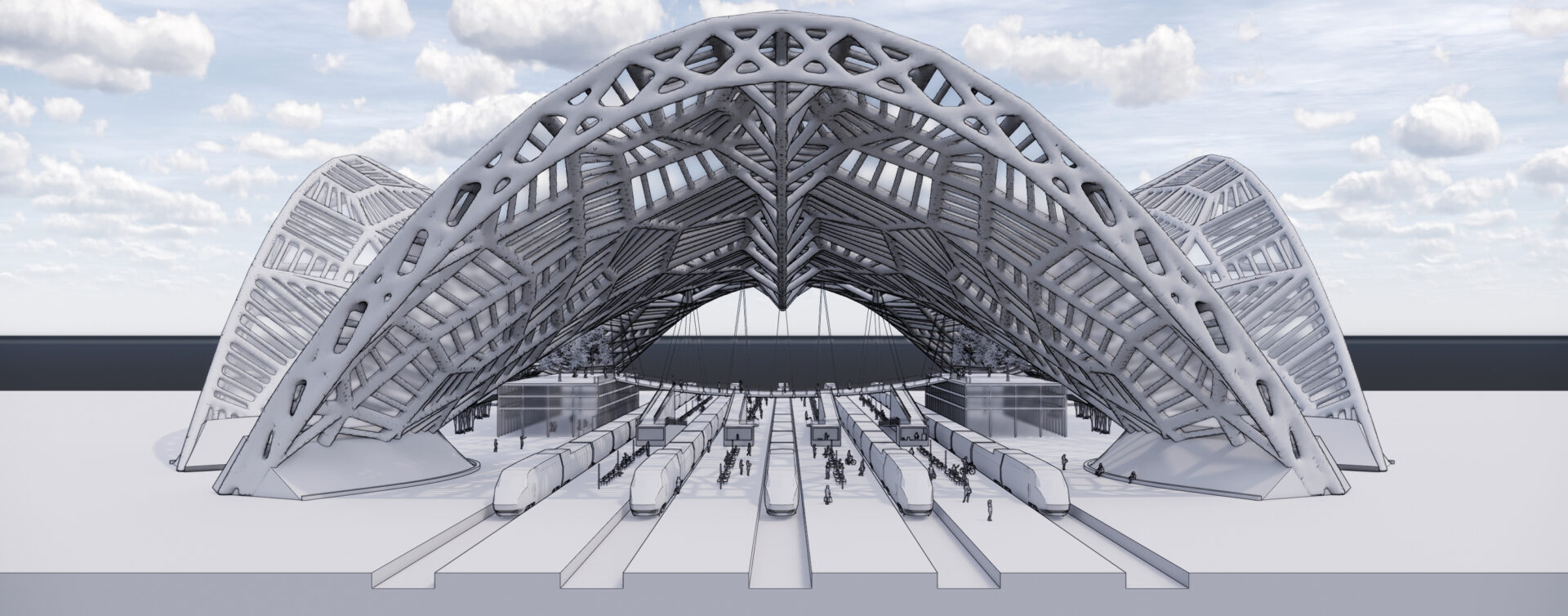
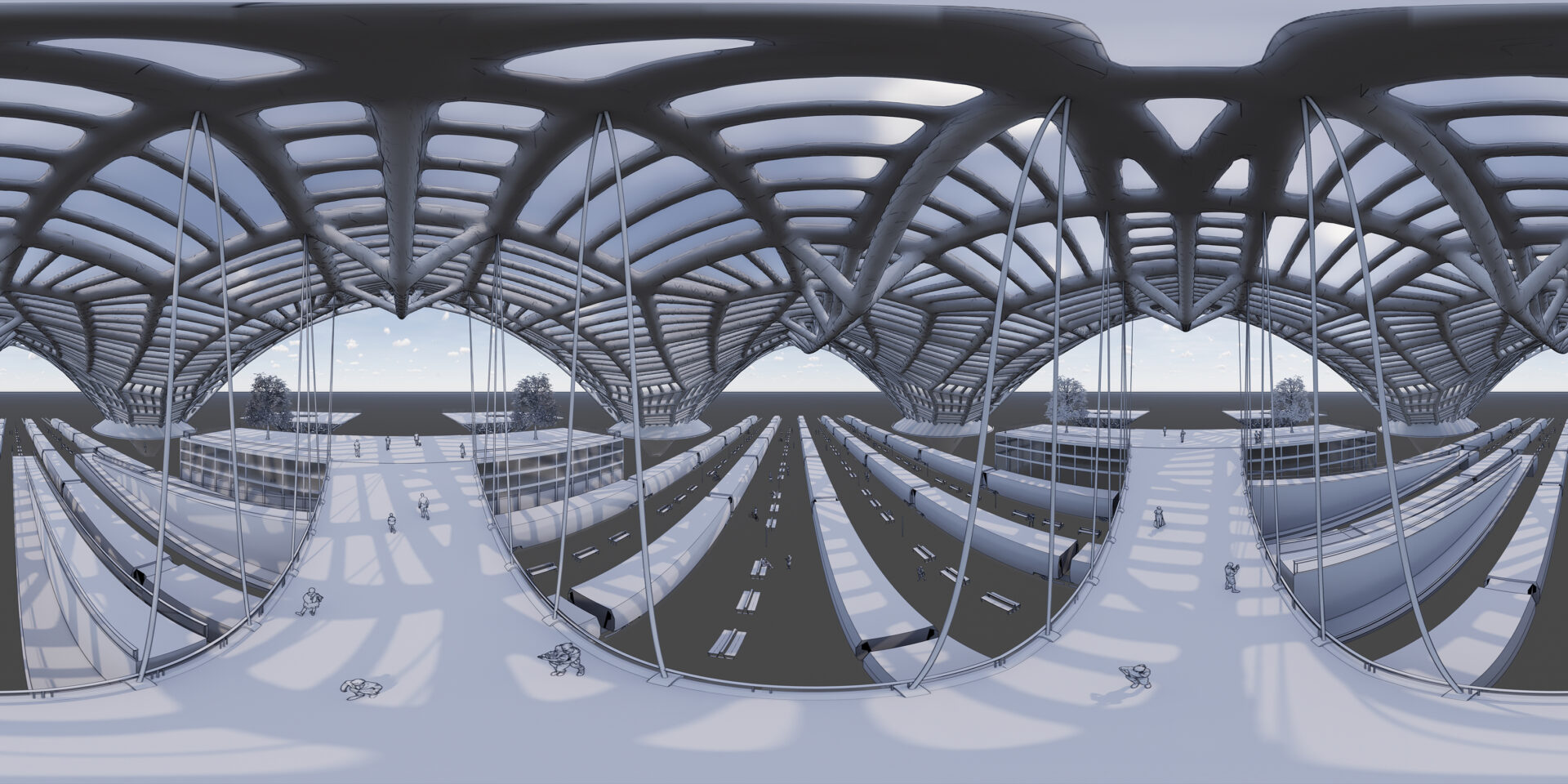
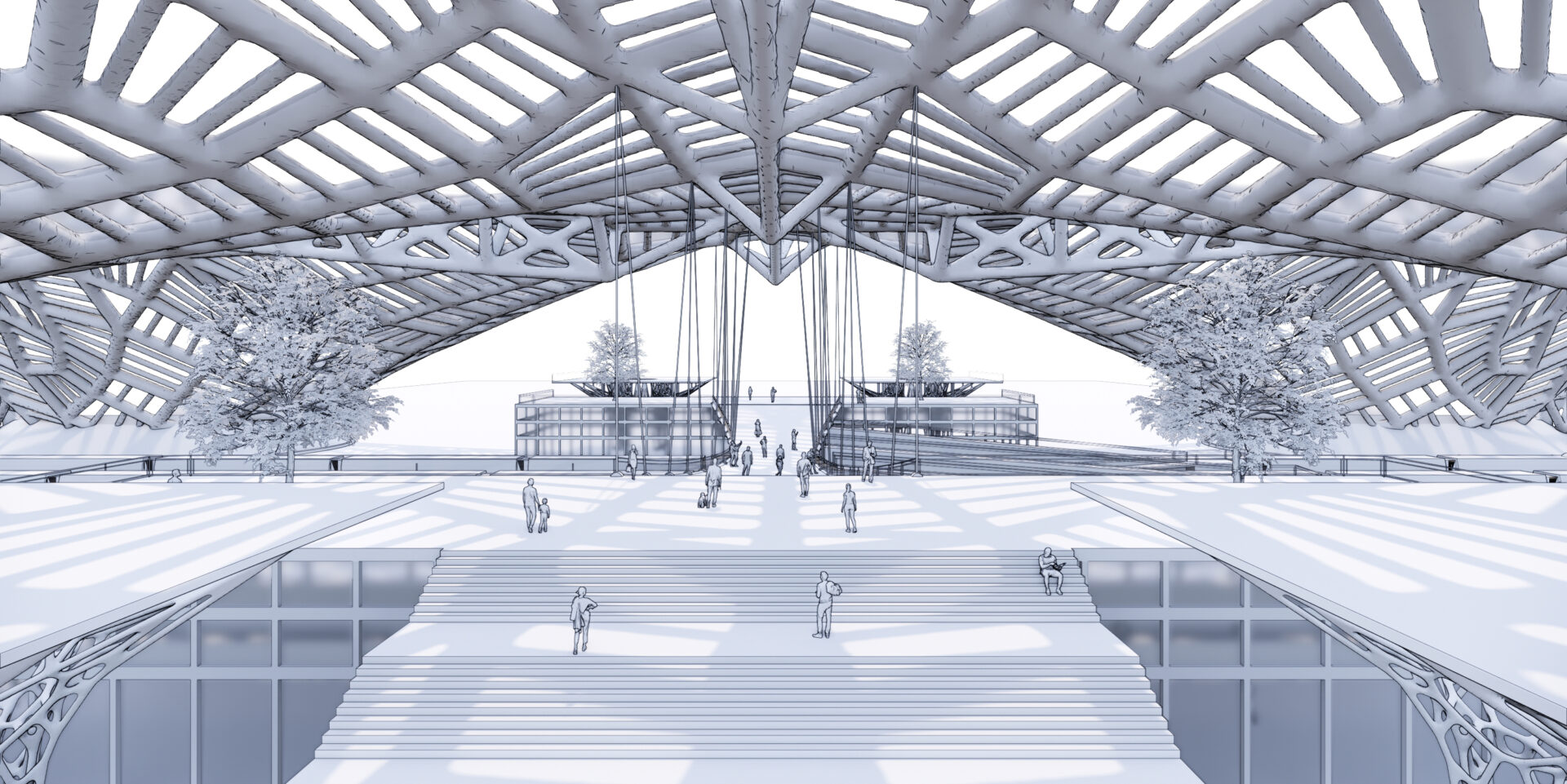
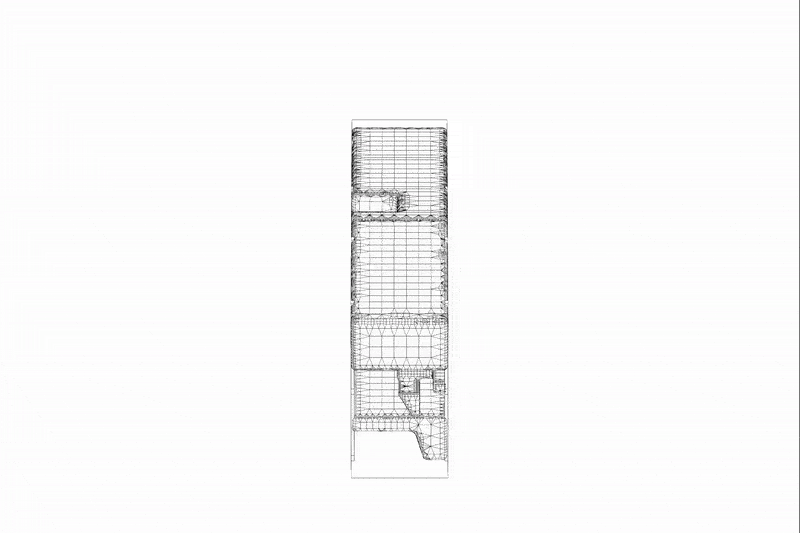
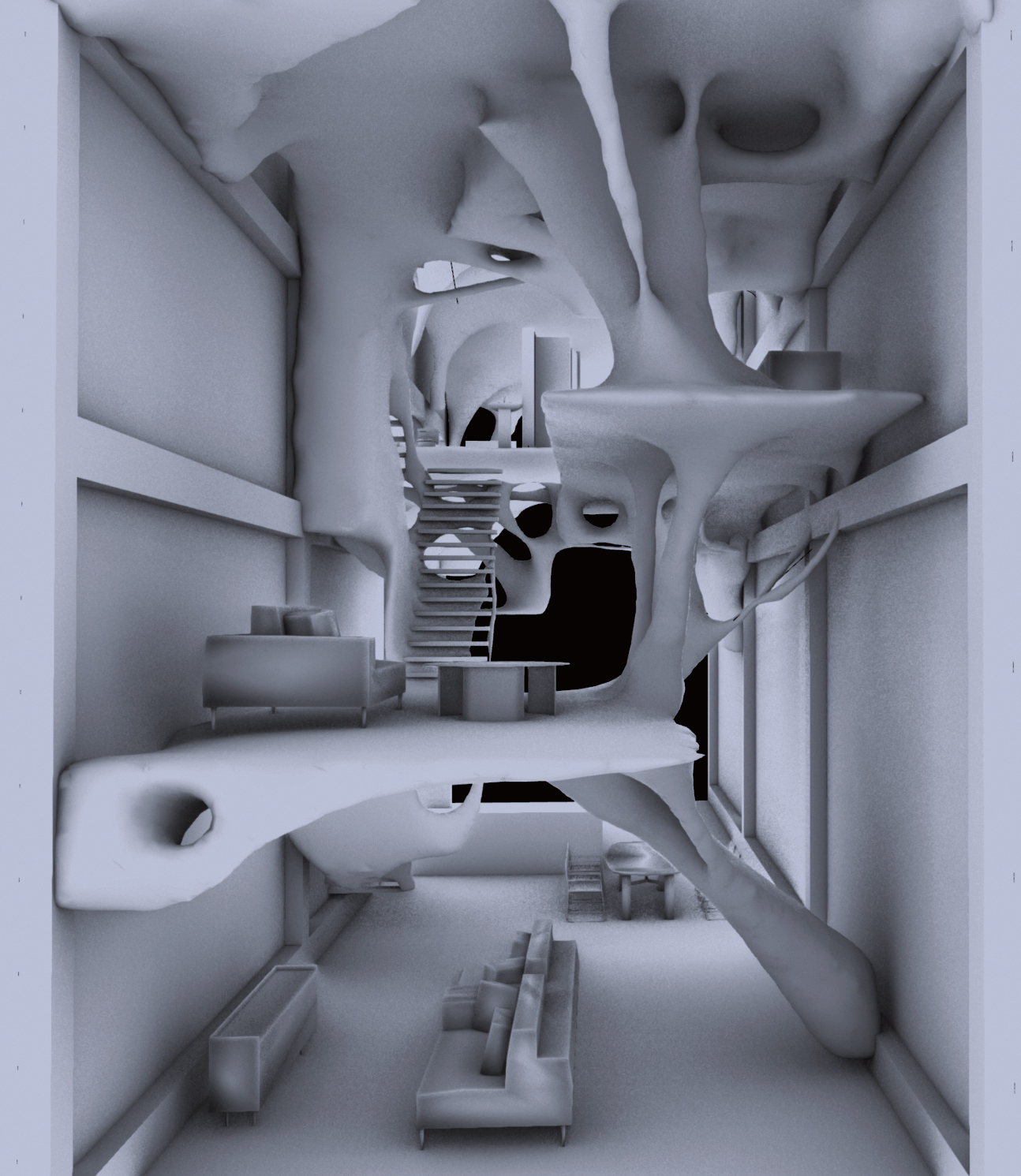
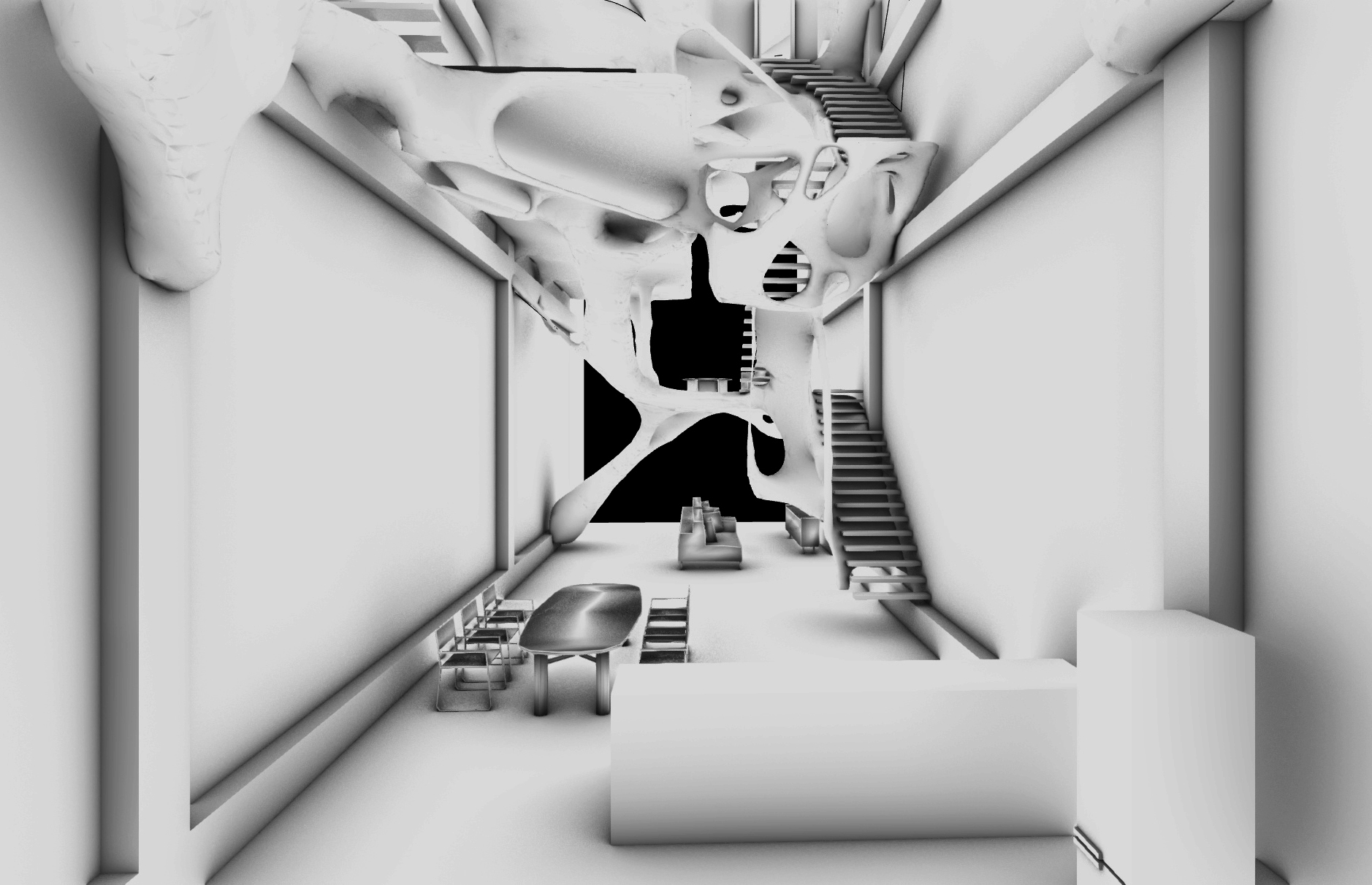
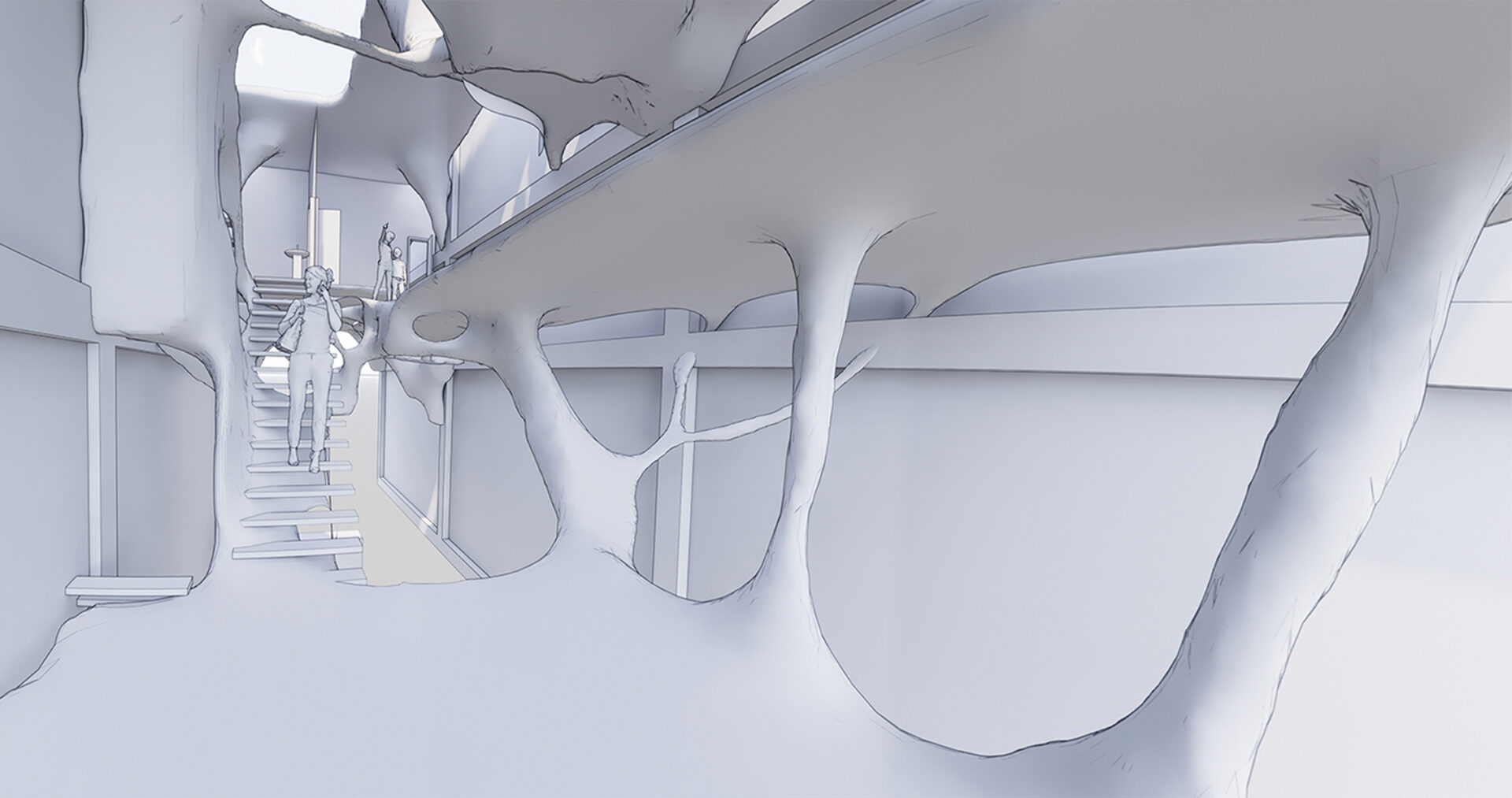
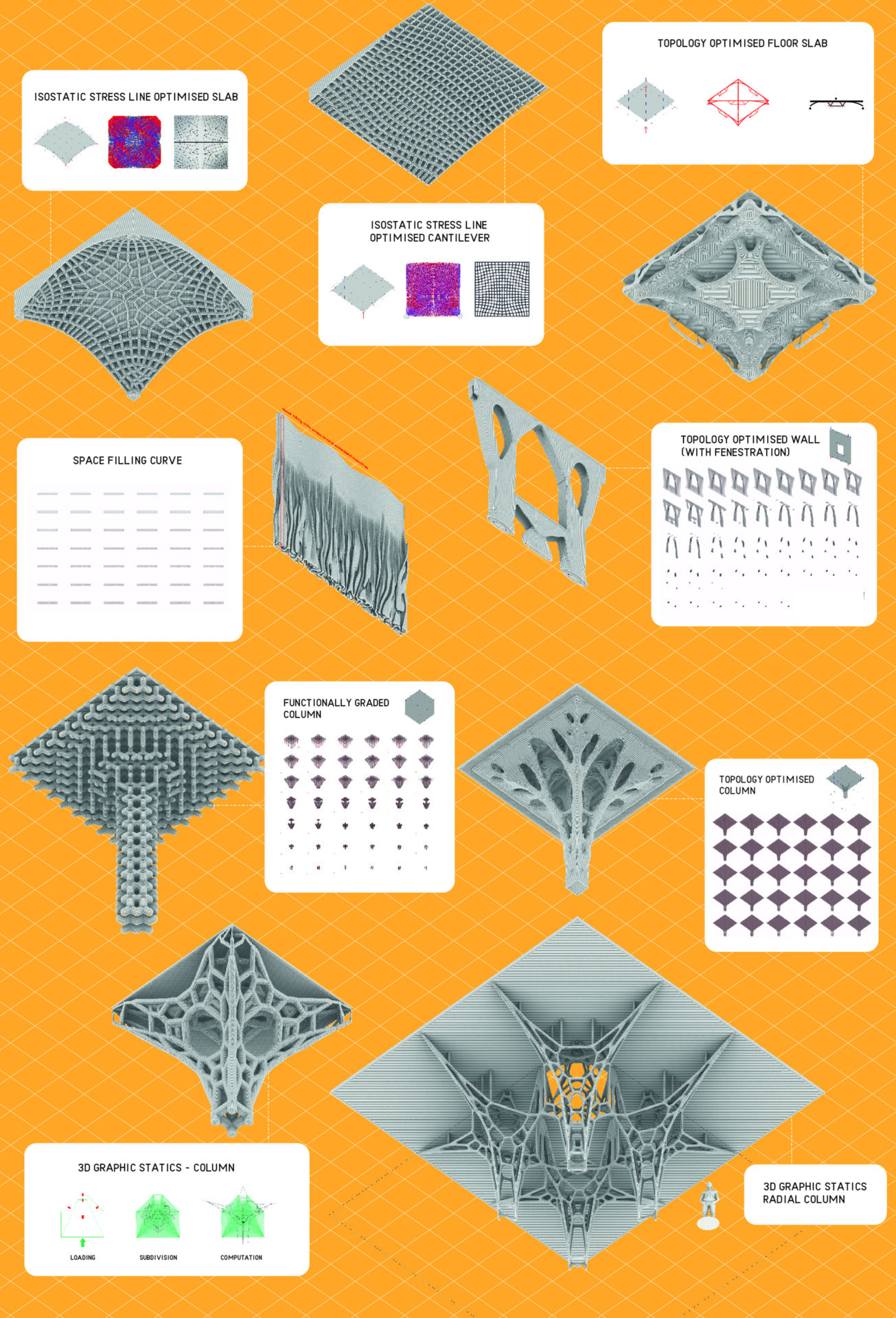
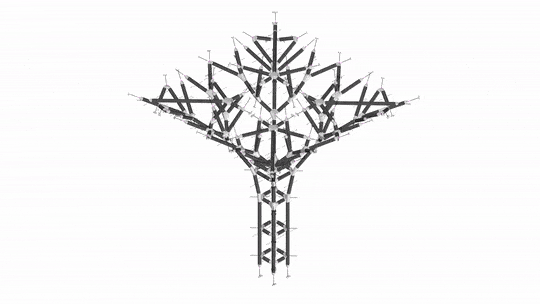
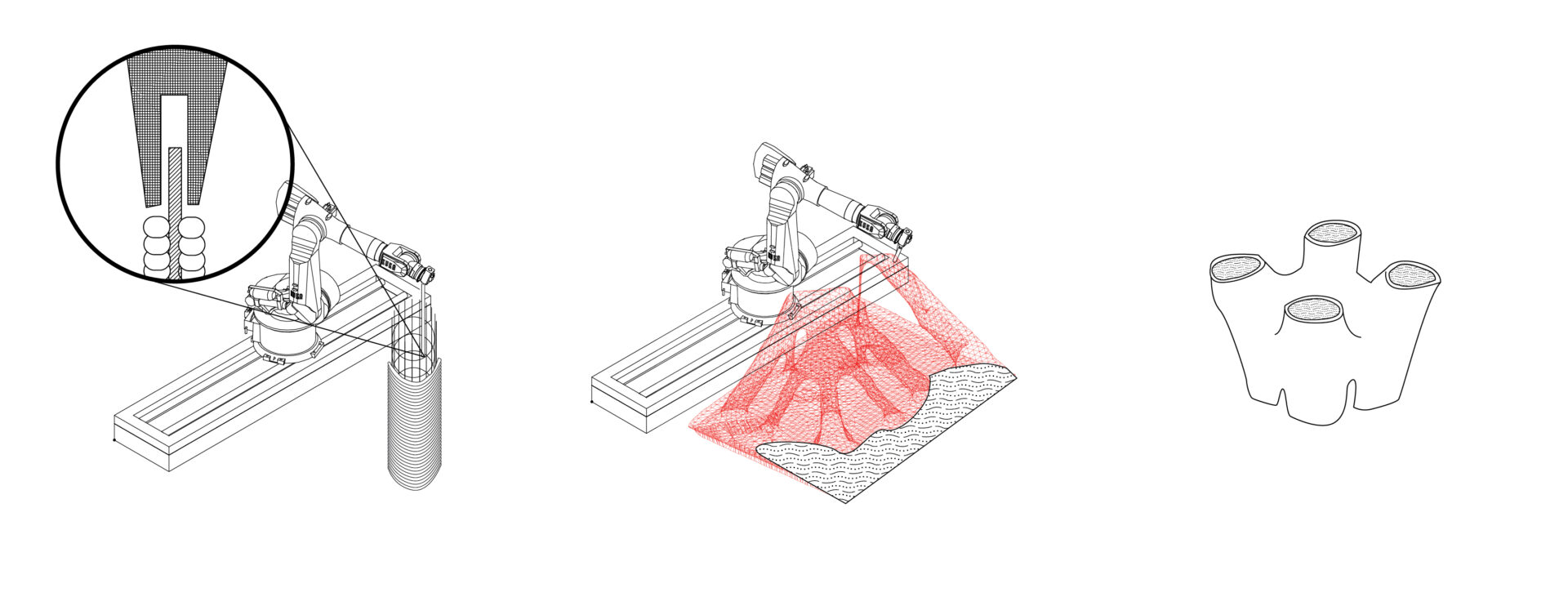
Supervisor's comments:
Structural optimization provides for the optimization of structural support, thereby reducing material use, increasing sustainability. Using 3D printing technologies, structurally optimized building components can also be produced efficiently, allowing these to enter mainstream construction. However, important questions remain as to what is the impact of structural optimization on building design and esthetics and is it possible for an architect to adopt structural optimization into their design processes. This thesis addresses both questions, exploring structural optimization for a variety of different building typologies, from a ramp up factory over a shophouse to a railway station, and emphasizing the embedding of optimization algorithms into the design process, building upon an extensive assessment of structural analysis, algorithmic development and 3D printing.
- Assoc. Prof. Rudi Stouffs (Dr.)